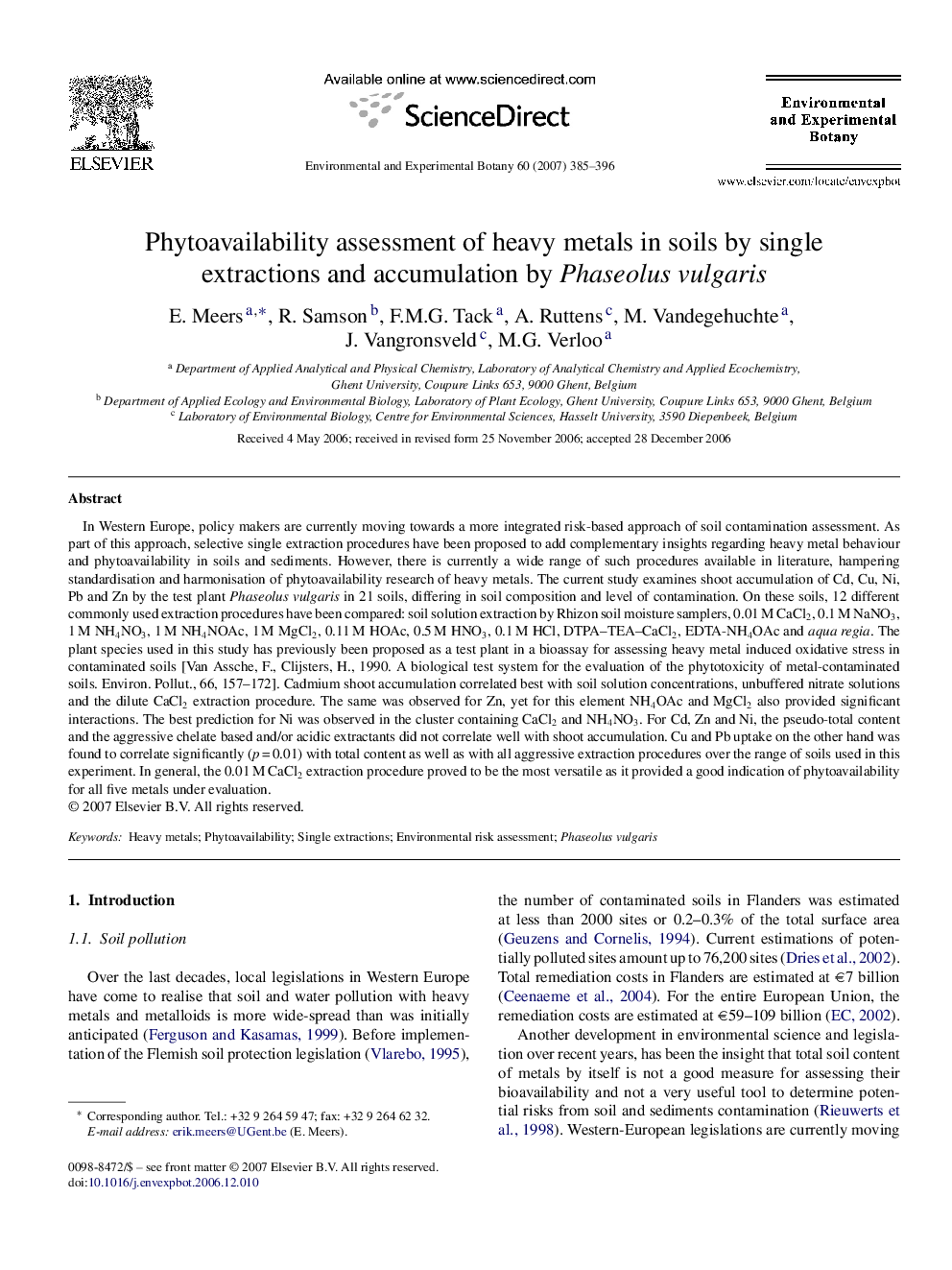| Article ID | Journal | Published Year | Pages | File Type |
|---|---|---|---|---|
| 4555468 | Environmental and Experimental Botany | 2007 | 12 Pages |
In Western Europe, policy makers are currently moving towards a more integrated risk-based approach of soil contamination assessment. As part of this approach, selective single extraction procedures have been proposed to add complementary insights regarding heavy metal behaviour and phytoavailability in soils and sediments. However, there is currently a wide range of such procedures available in literature, hampering standardisation and harmonisation of phytoavailability research of heavy metals. The current study examines shoot accumulation of Cd, Cu, Ni, Pb and Zn by the test plant Phaseolus vulgaris in 21 soils, differing in soil composition and level of contamination. On these soils, 12 different commonly used extraction procedures have been compared: soil solution extraction by Rhizon soil moisture samplers, 0.01 M CaCl2, 0.1 M NaNO3, 1 M NH4NO3, 1 M NH4NOAc, 1 M MgCl2, 0.11 M HOAc, 0.5 M HNO3, 0.1 M HCl, DTPA–TEA–CaCl2, EDTA-NH4OAc and aqua regia. The plant species used in this study has previously been proposed as a test plant in a bioassay for assessing heavy metal induced oxidative stress in contaminated soils [Van Assche, F., Clijsters, H., 1990. A biological test system for the evaluation of the phytotoxicity of metal-contaminated soils. Environ. Pollut., 66, 157–172]. Cadmium shoot accumulation correlated best with soil solution concentrations, unbuffered nitrate solutions and the dilute CaCl2 extraction procedure. The same was observed for Zn, yet for this element NH4OAc and MgCl2 also provided significant interactions. The best prediction for Ni was observed in the cluster containing CaCl2 and NH4NO3. For Cd, Zn and Ni, the pseudo-total content and the aggressive chelate based and/or acidic extractants did not correlate well with shoot accumulation. Cu and Pb uptake on the other hand was found to correlate significantly (p = 0.01) with total content as well as with all aggressive extraction procedures over the range of soils used in this experiment. In general, the 0.01 M CaCl2 extraction procedure proved to be the most versatile as it provided a good indication of phytoavailability for all five metals under evaluation.
